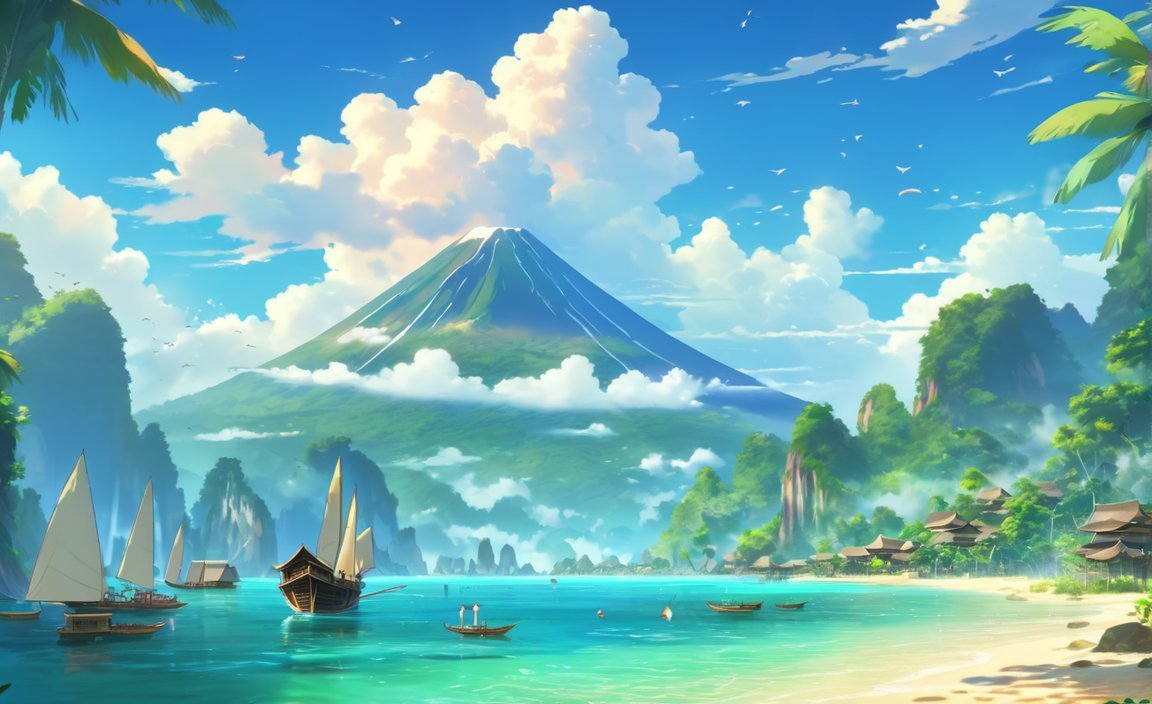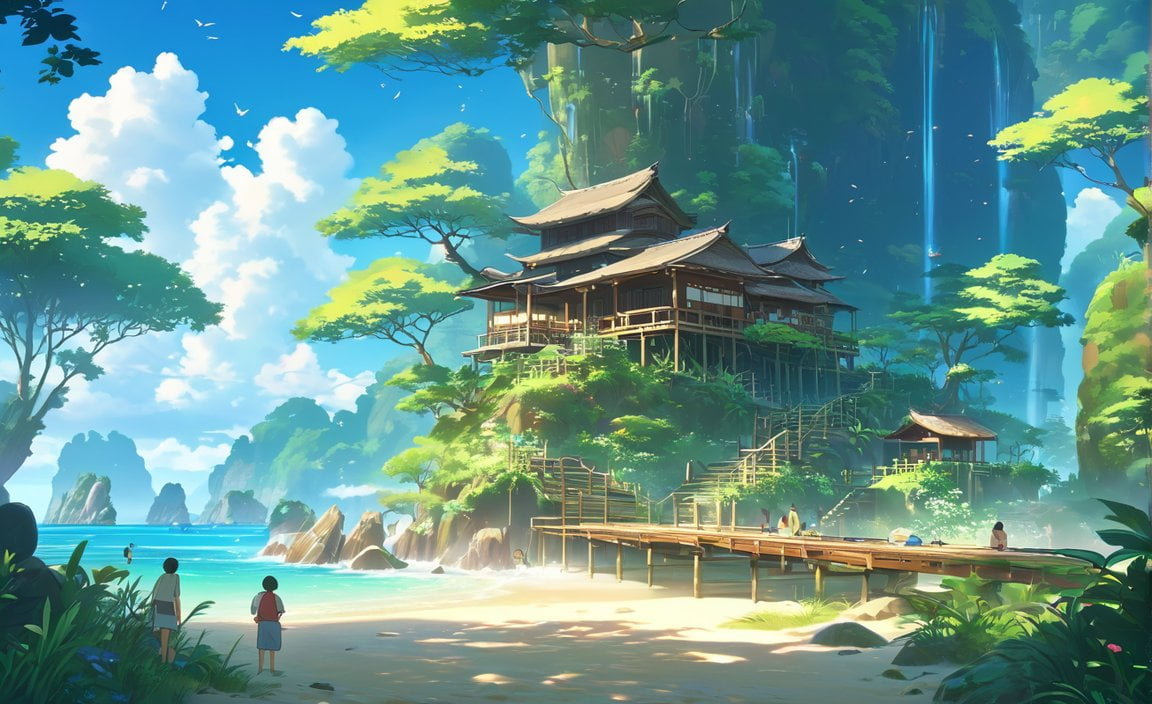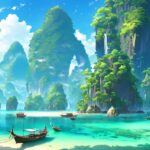Welcome to a fascinating journey through the captivating wonders of the Philippines, a country steeped in rich history, diverse geography, and vibrant culture. In this article, we will explore ten intriguing facts that showcase the unique charm of this enchanting nation. From its compelling historical background to the breathtaking landscapes and the influence of Spanish colonization, we will delve into the lesser-known aspects that make the Philippines a truly extraordinary destination. Additionally, we will uncover the country’s claim to being the social media capital of the world, highlighting the modern phenomenon that further adds to its allure. So, let us embark on this captivating exploration of the Philippines’ fascinating heritage and remarkable features.

Key Takeaways:
1. The Philippines has 8 major dialects and a staggering 7,641 islands.
2. It was the first Southeast Asian country to gain independence after World War II.
3. With an area of 115,831 square miles, the Philippines is the 5th largest island country.
4. The country is home to the world’s largest known pearl and is the largest supplier of nurses globally.
5. The Philippines is the only country where divorce is illegal.
6. It has the highest rate of discovering new animal species.
7. The Philippines boasts the world’s longest Christmas season.
8. It is home to the world’s largest shopping mall.
9. For more information, refer to facts.net and fresherslive.com.
Top 10 Amazing Facts About Philippines
1. The Philippines has 8 major dialects.
The Philippines is a linguistically diverse country, with eight major dialects spoken across different regions. These dialects are Tagalog, Cebuano, Ilocano, Hiligaynon or Ilonggo, Bicolano, Waray, Kapampangan, and Pangasinense. Each dialect represents the unique cultural heritage of the respective regions and adds to the vibrant tapestry of Filipino language and communication.
2. There are 7,641 islands in the Philippines.
With over 7,000 islands, the Philippines is an archipelago that offers a treasure trove of breathtaking landscapes and scenic beauty. From pristine white sand beaches to lush tropical forests and towering mountain ranges, each island has its own distinct charm. Exploring the diverse islands is an adventure in itself, unveiling hidden gems and stunning natural wonders at every turn.
3. After World War II in 1945, the Philippines was the first Southeast Asian country to gain independence.
The Philippines holds the pride of being the first Southeast Asian nation to achieve independence after World War II. This historical milestone, achieved on July 4, 1946, marked the end of over 300 years of Spanish colonization and nearly 50 years of American rule. The resilience and spirit of the Filipino people are reflected in this significant achievement, shaping the nation’s identity.
4. At 115,831 square miles, the Philippines is the 5th largest island country.
Covering an area of 115,831 square miles, the Philippines ranks as the fifth-largest island country in the world. Its vast territory encompasses a diverse range of landscapes, from picturesque beaches to towering mountain ranges, making it a dream destination for nature lovers and adventure seekers alike.
5. The Philippines has the world’s largest known pearl.
Located in Palawan, the Philippines is home to the world’s largest known pearl, known as the “Pearl of Lao Tzu” or “Pearl of Allah.” Discovered in the waters off Palawan in 1934, this impressive natural gem weighs approximately 14 pounds and measures 9.45 inches in diameter, showcasing the Philippines’ rich marine biodiversity and natural wonders.
6. The Philippines is the largest supplier of nurses in the world.
Filipino nurses are renowned worldwide for their exceptional skills, compassion, and professionalism. The Philippines is the largest supplier of nurses globally, with Filipino nurses making significant contributions to healthcare systems around the globe. Their dedication and expertise have earned them a reputation for excellence in the medical field.
7. The Philippines is the only country in the world where divorce is illegal.
In a world where divorce is a legal option in many countries, the Philippines stands as the only nation where divorce remains illegal. Marriage in the Philippines is considered a lifelong commitment, and annulment is the only legal recourse to terminate a failed marriage. This unique aspect of the country’s legal system reflects its strong cultural and religious traditions.
8. The Philippines has the highest rate of discovery of new animal species.
The Philippines boasts an incredible biodiversity, with a staggering rate of discovery of new animal species. Its unique geography and diverse ecosystems have made it a hotbed for scientific exploration. From colorful coral reefs teeming with marine life to the lush rainforests inhabited by rare and endemic species, the Philippines offers a captivating array of flora and fauna waiting to be discovered.
9. The Philippines has the world’s longest Christmas season.
Filipinos are known for their love for celebrating Christmas, and the Philippines holds the record for having the world’s longest Christmas season. Beginning as early as September, the holiday spirit fills the air with vibrant decorations, festive music, and lively gatherings. The celebration culminates with the grandest displays of lights and festivities, making Christmas in the Philippines truly special.
10. The Philippines has the world’s largest shopping mall.
A testament to the Filipinos’ love for shopping, the Philippines is home to the world’s largest shopping mall, the SM Mall of Asia. Spanning an impressive 4.2 million square feet, this colossal shopping complex offers an unparalleled retail experience, housing a vast array of local and international brands, entertainment facilities, and dining options. It showcases the Philippines’ vibrant consumer culture and love for leisure activities.
These top 10 amazing facts about the Philippines only scratch the surface of this captivating country’s richness and uniqueness. From its cultural heritage to natural wonders, the Philippines offers a myriad of experiences that will leave travelers in awe. Plan your visit today and discover the hidden gems that make the Philippines a truly enchanting destination.
References:
- facts.net
- fresherslive.com
Here are some interesting facts about Samoa that you probably didn’t know! Discover the rich culture, stunning landscapes, and unique traditions of this beautiful country.
Curious to know more about Bora Bora? Dive into these fascinating facts and explore the paradise-like beaches, crystal-clear turquoise waters, and luxurious overwater bungalows that make this island a dream destination.
The people of the Philippines lived under Spanish rule for 333 years
During the colonial era, the Philippines was under Spanish rule for a staggering 333 years. This period, which began in 1565 and lasted until 1898, deeply shaped the history, culture, and traditions of the Filipino people.
Spanish Colonization: An Enduring Legacy
Under the order and oversight of Philip II of Spain, the Spanish colonization of the Philippines began with the arrival of Ferdinand Magellan in 1521. However, Magellan’s venture was cut short when he was killed in the Battle of Mactan. Despite this setback, subsequent Spanish expeditions consolidated their control over the archipelago.
Source: Wikipedia
Significant Events and Developments
Throughout the 333 years of Spanish rule, the Philippines witnessed various significant events and developments. The country endured attacks from Dutch forces, highlighting its strategic importance as a trading post. Moreover, Manila itself experienced a brief British occupation, adding another layer to the complex history of the region.
Source: Positively Filipino
Economic Transformation and Cultural Influence
One notable aspect of Spanish rule in the Philippines was the opening of the country to world trade. This global exchange brought about a significant transformation in the economic landscape of the archipelago. Spanish influence also left an indelible mark on Filipino culture, language, and traditions. The enduring Spanish influence can still be seen today, from the Spanish-derived vocabulary in the Filipino language to the predominantly Catholic religion practiced by a majority of the population.
Philippine Revolution and Spanish-American War
The period of Spanish rule ultimately led to the Philippine Revolution and the Spanish-American War, marking a pivotal point in the nation’s history. The Philippine Revolution, waged by Filipino nationalists, aimed to break free from Spanish colonial control and establish an independent government. The Spanish-American War, which had global implications, resulted in the cession of the Philippines to the United States.
Source: Positively Filipino
Legacy and Impact
The 333 years of Spanish rule had a profound and lasting impact on the Philippines. Filipino culture, society, and identity were significantly shaped by this extended period of colonization. Spanish influence can be seen in various aspects of Filipino life, including language, religion, cuisine, and architecture. The Spanish legacy remains an integral part of the country’s rich heritage.
Key Takeaways:
- The Philippines lived under Spanish rule for 333 years, from 1565 to 1898.
- Ferdinand Magellan’s arrival in 1521 marked the beginning of Spanish colonization.
- Spanish rule brought significant events like attacks from Dutch forces and a brief British occupation.
- The opening of the Philippines to world trade transformed the country’s economic landscape.
- Spanish influence left a lasting impact on Filipino culture, language, and traditions.
- The Philippine Revolution and the Spanish-American War marked significant turning points in the nation’s history.
- The legacy of Spanish rule can still be seen in various aspects of Filipino life today.
Sources: Wikipedia, Positively Filipino
The Philippines has been called the social media capital of the world
The Philippines has earned the title of the “Social Media Capital of the World” for its remarkable engagement and usage of various social media platforms. With an average of four hours spent on social media each day per Filipino internet user, it’s no wonder that the country takes the lead in this digital sphere. But what makes the Philippines stand out in the world of social media? Here are 10 captivating facts about the Philippines’ unique charm in the realm of social media:
1. Active Social Media Users
The Philippines boasts a vibrant social media landscape, with Filipinos as some of the most active users on platforms like Facebook, Instagram, Snapchat, and Twitter. The country has embraced social media as a way to connect with others, making it an integral part of Filipino culture.
2. The “Social Media Capital”
For five consecutive years, the Philippines has been recognized as the “Social Media Capital of the World.” This title highlights the country’s dominance in terms of social media usage and engagement. Filipino internet users truly immerse themselves in the digital world, spending ample time interacting with friends, family, and the online community.
3. Facebook Reigns Supreme
Out of all social media platforms, Facebook takes the lead in the Philippines. Filipinos have consistently devoted their time and attention to Facebook, making it their primary platform for social interaction, news consumption, and content sharing.
4. Meeting New People and Staying Connected
Filipinos use social media not only to stay in touch with friends and family but also to expand their social networks. It has become a convenient way to meet new people, form connections, and strengthen relationships with like-minded individuals.
5. A Growing Digital Community
With the number of social media users in the Philippines expected to surpass 95 million by 2029, the digital community is set to grow even further. This projection showcases the country’s unwavering embrace of technology and the significant influence social media has on the Filipino population.
6. Abundance of Engaging Content
Filipinos have a keen eye for captivating content, leading to the proliferation of creative and engaging posts across various social media platforms. From viral videos to thought-provoking articles, the Philippines’ social media landscape is constantly buzzing with interesting and entertaining content that captivates its users.
7. A Platform for Expression
Social media has provided a platform for Filipinos to express their thoughts, ideas, and opinions. It serves as a catalyst for discussions on various social, political, and cultural topics, allowing individuals to share their perspectives and contribute to meaningful conversations.
8. Business Opportunities
The booming social media scene in the Philippines has opened doors for entrepreneurs and businesses to showcase their products and services. Many local businesses have leveraged social media platforms to reach a broader audience, increasing their visibility and driving sales.
9. Influence on Filipino Lifestyle
Being the “Social Media Capital” has significantly influenced the Filipino lifestyle. It has shaped consumer behavior, communication patterns, and even career paths. Social media has become deeply ingrained in everyday life, playing a pivotal role in shaping trends and fostering digital innovation.
10. A Spark for Change
Social media has also become a catalyst for change in the Philippines. It has empowered individuals and communities to advocate for social causes, raise awareness about pressing issues, and mobilize support for various campaigns. The ability to connect and rally behind important causes has made social media a powerful tool for positive change.
These captivating facts about the Philippines’ unique charm in the world of social media showcase the country’s unwavering enthusiasm and engagement in this digital landscape. As the “Social Media Capital of the World,” the Philippines continues to inspire and fascinate with its vibrant online community.
Key Takeaways:
– The Philippines has been recognized as the “Social Media Capital of the World” for five consecutive years.
– Filipino internet users spend an average of four hours a day on social media platforms.
– Facebook is the most popular social media platform in the Philippines.
– Social media is not only used to stay connected but also to meet new people and expand social networks.
– The number of social media users in the Philippines is projected to exceed 95 million by 2029.
– Social media in the Philippines is a platform for expression, engagement, and business opportunities.
– It has influenced Filipino lifestyle, consumer behavior, and career paths.
– Social media is a catalyst for change, empowering individuals and communities to advocate for social causes.
SOURCES:
– HSLU.ch – source
– Statista – source

FAQ
Q1: What are some historical facts about the Philippines?
A1: Some historical facts about the Philippines include 333 years of Spanish rule, the arrival of Ferdinand Magellan in 1521, the Philippine Revolution, and the Spanish-American War.
Q2: What are some geographical facts about the Philippines?
A2: Some geographical facts about the Philippines include having 7,641 islands, being the 5th largest island country at 115,831 square miles, and having the highest rate of discovery of new animal species.
Q3: How long did the people of the Philippines live under Spanish rule?
A3: The people of the Philippines lived under Spanish rule for 333 years, from 1565 to 1898.
Q4: Why is the Philippines called the social media capital of the world?
A4: The Philippines is called the social media capital of the world because Filipino internet users spend an average of four hours a day on social media sites, making them the most active users on platforms like Facebook, Instagram, Snapchat, and Twitter.
Q5: What makes the Philippines the social media capital of the world?
A5: The Philippines is considered the social media capital of the world due to the high level of social media use among Filipinos, such as spending an average of over four hours a day on social media and having the highest time spent on social media for several consecutive years.
- Discover the Borough of Frenchtown, NJ: A Delaware River Town Blending History, Art & Nature - November 22, 2024
- Discover Clarks Grove, MN: A Small Town with a Big Heart - November 22, 2024
- Califon Borough, NJ: A Small Town with a Big Heart (and Rich History) - November 22, 2024













